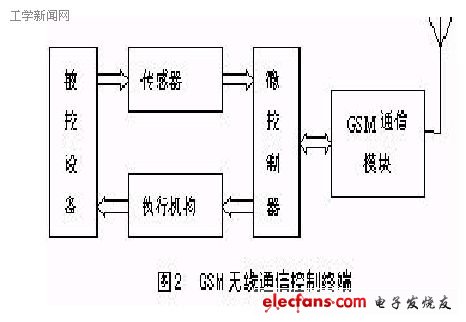introduction:
SMS (Short Message Service) short message service is an application service for sending and receiving text information between a GSM terminal (mobile phone) provided by the GSM (Global System for Mobile CommunicaTIon) system through a service center. Complete the storage and forwarding of information. As a basic service of GSM network, short message service has been paid more and more attention by system operators and system developers. Various applications based on this service have also flourished. With the GSM network as the data wireless transmission network, it is possible to develop various applications with extremely promising prospects, such as two-way transmission of wireless data, wireless remote detection and control. Typical applications include: wireless transmission and wireless automatic alarms for monitoring data such as substations, electricity meters, water towers, reservoirs or environmental monitoring points; remote wireless control of high-voltage line breakers, heating systems, flood arrest systems or other electromechanical systems; Fleet traffic management and control command system; control and monitor the operating status and inventory levels of cigarette, food and beverage vending machines, etc.
Since the GSM network realizes networking and roaming nationwide, it has the characteristics of strong network capability, and users do not need to separately network, which greatly saves network coverage and saves customers expensive network construction costs and maintenance costs. At the same time, it has no restrictions on the number of users, and overcomes the drawbacks of traditional private network communication system, such as large investment cost, high maintenance cost, and limited coverage and number of users of network monitoring. Compared with the traditional cluster system, it has unparalleled advantages in wireless network coverage, and the data transmission function of GSM SMS itself makes these applications rapidly popularized. Wireless communication using GSM short message system also has two-way data transmission function, stable performance, and provides a powerful support platform for communication of remote data transmission and monitoring equipment.
1 Wireless data transmission monitoring and control of SMS short messages
Typically, the wireless data transmission monitoring and control system based on the SMS short message service is a point-to-multipoint remote wireless two-way data communication and control system, as shown in FIG. The central point of the system is the data or monitoring command center, which consists of a computer network, a database, an electronic map, and a GSM communication interface. The monitoring center mainly completes the sending and receiving of various information and data: on the one hand, receives the information and data uploaded by each monitoring point, and puts them into the corresponding database and distributes them to the corresponding monitoring computers to realize the monitoring points. Monitoring and management; on the other hand, the monitoring center responds to the monitoring information sent by the monitoring computer to each monitoring point, and sends the information to the corresponding monitoring point, thereby achieving the purpose of controlling the monitoring point device.

2 GSM wireless communication control terminal
The GSM wireless communication control terminal is an MC3 embedded system with the functions of measurement, data acquisition, control, and wireless communication as shown in FIG. 2. The GSM wireless communication control terminal performs bidirectional information transmission through the GSM network and the monitoring center. It transmits the measured and collected data information to the monitoring center, and receives the control data of the monitoring center to implement corresponding control on the equipment.

3 hardware implementation of GSM communication interface
The communication interface of the GSM wireless communication control terminal generally adopts a standard GSM module currently available on the market for secondary development, such as TC35, FALCOM, WISMO3, and the like. These communication modules have all the functions of GSM wireless communication, and provide a standard UART serial interface, supporting the AT command set instructions defined in GSM 07.05. Therefore, the MCU can be easily connected to the GSM module through the UART interface, and the AT command can be used to conveniently and succinctly realize the sending, receiving, searching and management of short messages.
In our designed GSM wireless communication control terminal, the GSM communication module used is FALCOM A2D, and the MCU uses Atmel's high-speed 8-bit microcontroller ATmage128. The ATmega128 chip has 64 pins and integrates 4K bytes of RAM, 4K bytes of EEPROM, 128K bytes of Flash, and 2 UART serial interfaces. Due to the use of high-performance MCU, a large number of peripheral devices, such as external expansion RAM and ROM memory, are omitted, which greatly simplifies the hardware structure and improves the reliability of the system. The hardware block diagram of the system is shown in Figure 3.

Polygonal Pole,25 Foot Utility Pole,Hot Dip Galvanizing Power Pole,Low Voltage Utility Pole
JIANGSU HONGGUANG STEEL POLE CO., LTD. , https://www.hgsteelpole.com